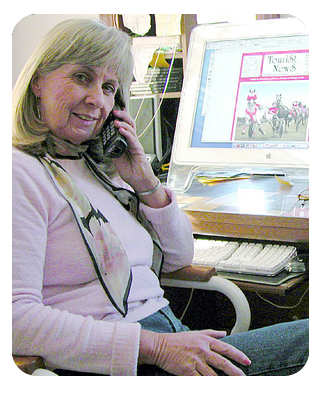By Jasmine Wu, Bulletin Staff
‘People think that newspapers don’t work or newspapers are dying, but in reality it’s not true. Newspapers have a very real and active, engaged audience. We have to revisit the value of the newspaper itself.’
— Mark French, Advertising director,
Republican of Springfield, Mass.
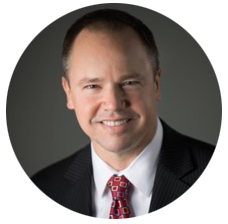
As newspaper advertising revenues declined steadily since 2006, evidenced in a 2014 Pew Research Center report, advertising directors and publishers in New England have been coming up with alternative ways to make up for lost ad revenue.
Those responsible for ad revenue at New England newspapers ranging from small weeklies to large dailies say a slump in that revenue can be overcome with initiatives that include leveraging a newspaper’s connection to the community and that range from partnerships with online classified sites to vendor tabs documenting landmark community events.
The Bulletin interviewed nine ad directors and other newspaper business executives in New England. Following are avenues they say have proved to be worth pursuing.
“I can’t imagine that there isn’t a newspaper company that wouldn’t say print revenue has gone down tremendously,” said Barbara Bock, vice president of advertising at the Portland (Maine) Press Herald, a daily with more than 46,000 circulation and the Maine Sunday Telegram of Portland, its sister Sunday newspaper, whose circulation is about 60,000. “It’s shocking how much we’ve dwindled, so we are constantly reinventing ourselves.”
One of the biggest initiatives newspapers are exploring is event marketing.
The Press Herald, for example, has been holding a series of interview sessions with well-known figures in Maine, with the guest interviewed by a newspaper columnist or writer. On average, about 200 people attend each session.
“It’s been very successful and resonated really well with our readers. We’ve sold out every one of them,” Bock said. “The readers come to hear the interviewer as much as the guest. It’s been a wonderful experience to engage our readers and connect them with the newsroom.”
Bock said the profit comes from sponsorships and ticket sales, but most importantly, the sessions help the newspaper to stay relevant to the community.
Mark French, advertising director at The Republican of Springfield, Mass., said the Republican offers event marketing because a company often needs help getting enough people to attend.
“They don’t have the means of getting enough advertising, so (we will say), ‘I will go and advertise your event for free, but because I’m advertising, I want a portion of the proceeds from the ticket sale’,” French said.
The newspaper can profit because its investment in the event marketing comes at little expense; it uses in-paper advertising to promote the event, he said.
Tim Marken, chief growth officer of The Boston Globe, said the Globe was looking forward to running a number of events, including a five-mile Island Run on an island in Boston Harbor in September and a “Let’s Talk about Food” festival in Boston’s Copley Square in October, which is focused on eating healthier.
“Events give the opportunity for clients to come and participate, knowing we’re going to draw the right audience for them,” Marken said.
Hosting such events are just one slice of the Boston Globe’s advertising strategy. Marken also talks about how the Globe’s suite of products includes experiential advertising and its radio station, all of which Marken said “differentiate you and give you a more compelling argument with the audience.”
Experiential advertising helps to “bring the audience in touch with the product,” Marken said. For example, one program the Globe has done with Eversource, an energy provider based in Boston, created a curriculum for grade school children to educate them on electricity and how to be energy-efficient in their homes.
“We will develop, execute, and measure the program for the client, so we’ll charge the client for these services, much as we’d charge for advertising space on digital and (in) print,” Marken said.
RadioBDC, which is owned by the Boston Globe and runs on Boston.com, was launched in August 2012.
“It’s a powerful vehicle for us to attack different audiences,” Marken said. “We ask, ‘How do you become attractive to a broader audience?’ We want to make sure we capture the millennials as well as the baby boomers.”
For smaller newspapers, differentiating might mean offering a number of different papers in which to advertise.
Greg Popa is publisher of The Stowe Reporter, the Waterbury Record, and The News and Citizen of Morrisville, all in Vermont.
Those three papers are part of the Burlington (Vt.) Area Newspaper Group, or BANG, which is made up of eight papers total. Advertisers can save time and money by placing one ad and choosing at least two or more other papers in BANG for it to appear in. Through these eight papers, one advertisement can reach up to 53,500 households.
“It’s a good thing for all of us because we can attract customers from different communities. When we joined, it immediately added to our bottom line,” Popa said.
Jan Koivisto, advertising director of The Chronicle of Willimantic, Conn., said it benefits from offering many types of publications in which to advertise. The Chronicle is a daily newspaper with a circulation of about 6,000. It also publishes a weekly shopper that goes to non-subscribers and about 10 town recreation books. That way, customers have different options based on where they want to advertise, he said.
Koivisto said one strength of having diverse publications is that it provides a newspaper with an opportunity to upsell advertising. An advertiser who buys space in a town recreation book might also be persuaded to place the same ad in the newspaper and its shopper publication.
Scott Kimball, advertising director at The Ellsworth (Maine) American and Mount Desert Islander of Bar Harbor, Maine, organizes advertising groups for businesses that might want to team up to entice more people to one location.
“All the ads from that one town might be placed on one page and if we say, ‘come to Blue Hill,’ the five businesses in Blue Hill are all right there,” he said.
Kimball also makes use of special sections, including historic special sections that celebrate anniversaries. Recently, for example, the Ellsworth American and the Mount Desert Islander celebrated the 100th anniversary of Acadia National Park, near Mount Desert, with such a section.
“There’s a lot of interest in these,” he said. “It really helps us, and a tremendous number of advertisers want to participate in it.”
In the Chronicle, Koivisto runs a readers’ choice special section, in which readers vote, for example, for the best restaurant or bar. He said that section does well and attracts a lot of reader interest.
Robyn Collins is publisher at Shore Publishing LLC, based in Madison, Conn., which oversees seven weeklies along Connecticut’s shoreline from East Haven to Essex. Collins said that although special sections are tried-and-true moneymakers, she is focused on trimming the number Shore publishes.
“We’re trying to streamline them back down and only produce the ones our audience really wants,” because she thinks that they’ve grown to a point where the readers can feel overwhelmed.
Collins said Shore Publishing also is responding to its clients by focusing its advertising efforts on local businesses.
“It’s something that we’ve always done really well. We never relied on the big-box stores to get our revenue,” such as Macy’s or Best Buy, she said. “We work really closely with the mom-and-pop shops, and that’s been a successful model for us. The difference is the smaller retailers keep a steady marketing plan. (When) the big boxes make a big marketing change … we didn’t have the same massive depletion of income.”
Other ad directors agreed with Collins on that point.
Judith Hanson is publisher of Tourist News, a three-season arts and entertainment newspaper based in Kennebunk, Maine. She said she doesn’t have any national advertisers, and didn’t lose any revenue from the recession.
“I’m a niche-market weekly. I felt absolutely no impact in the recession,” she said. “In general, business comes from local small businesses, and they didn’t pull out during the recession.”
Popa said that, besides reaping financial rewards, focusing on local news differentiates the Stowe Reporter, the Waterbury Record, and the News and Citizen from bigger newspapers.
“Since we’re so local, we are providing a service that no one else is going to provide,” he said.
Jordan Brechenser is advertising director of New England Newspapers Inc., whose newspapers include The Berkshire Eagle of Pittsfield, Mass., the Bennington (Vt.) Banner, the Brattleboro (Vt.) Reformer, and the Manchester (Vt.) Journal. He said those papers used to be owned by Digital First Media, based in Denver, but have recently been acquired by a handful of local investors.
“(The investors) believe in local journalism and that what large newspapers were doing was detrimental to their existence,” he said. “We’re focusing back on what the reader wants and what the audience wants. We’re reinvesting in the community to be what newspapers once were.”
For example, New England Newspapers has distributed surveys and set up conferences to find out what its audiences are interested in. Some of the improvements being made are physical and visual — for example, a heavier paper or a darker ink. Readers have also indicated that they’re most interested in local news, which they can’t find anywhere else.
Soon after the newspapers announced that they would shift to a more local news focus, community leaders began showing the papers more support, Brechenser said.
“We’ve immediately seen an increase in local interest” to advertise in the newspapers, he said.
Brechenser said having community support is worth more than just its financial advantages.
“Local advertising makes it look like the community supports (the newspaper) and is behind it, and that’s worth something. That’s our ultimate goal,” he said.
Brechenser said the newspapers’ involvement with the community can be used to create partnerships that supplement ad revenue. He responded to the struggle many newspapers face with lost classified advertising by partnering with Monster.com, a jobs website. He said that through the collaboration, Monster pays New England Newspapers when one of its papers sells an ad and also puts it on Monster’s website.
“(Monster) has realized there is still a strong marketplace with dailies,” Brechenser said. “They don’t have enough salesforce to reach every little town and city throughout the United States, so they rely on daily newspapers.”
The collaboration with Monster allows the newspaper client to broaden the audience that its ad reaches, because New England Newspapers can make a digital version of the help-wanted ad and upsell it onto Monster.
“(We’ve become a) one-stop shop. Oftentimes local businesses don’t know how to contact Monster, but they can contact their local sales rep,” Brechenser said.
The Springfield Republican’s French similarly sees strength in partnerships, particularly by collaborating with real estate agents. Under a Republican ad program, a real estate agent can advertise a house for free in the paper until it is bought. The fee is agreed upon in advance. French said the fee depends on the number of listings and whether the agent is involved with a larger digital ad package. After the sale of the house is completed, the agent is charged.
“Because we have effective advertising, it sells rather quickly,” French says. “You’re in it together, and it’s a win-win.”
French also finds advantages in connecting with the community with what he calls vendor tabs, which are free-standing sections. In the Republican, they are usually no less than 20 pages, and they go in depth on detailing an activity such as a historic event or a big construction project.
“If you have a major, long-standing company celebrating its centennial anniversary …, it’s an opportunity to partner with that organization in a joint effort to create a historic recap of the organization’s community contributions, mission, capture photos and (have) a timeline to project what’s happening in the future,” French said.
The revenue comes in part by charging the organization for the vendor tab, but mostly through advertisements with associated vendors. For instance, in a tab documenting the construction of a hospital wing, businesses that have participated in the construction project, such as plumbing or architecture companies, might also buy ads in the tab.
Like French, other advertising directors say that a connection to the community matters, and if the audience recognizes that, it will be responsive.
As one example of how a strong community connection might benefit newspapers beyond adding to their ad revenue, the Shore Publishing papers created a voluntary pay program in which they asked readers to donate to help subsidize those papers, which are distributed free, Collins said.
Collins said the campaign was done by snail mail.
“We say to the readers, ‘We know you love getting your paper. We’re trying to support a ton of organizations and nonprofits. Would you help us by making a voluntary (donation) so we can continue helping the community and grow?’”
In the first year of the donation program, the Shore Publishing papers generated about $80,000, and are excited to do the same this year, she said.
“It was a huge change from a budget perspective. All of this gave us supplemental revenue to continue to grow,” Collins said.
Examples of success stories like Collins’ and others’ demonstrate newspapers’ abilities to sustain themselves in changing times.
“People think that newspapers don’t work or newspapers are dying, but in reality it’s not true. Newspapers have a very real and active, engaged audience,” French said. “We have to revisit the value of the newspaper itself.”
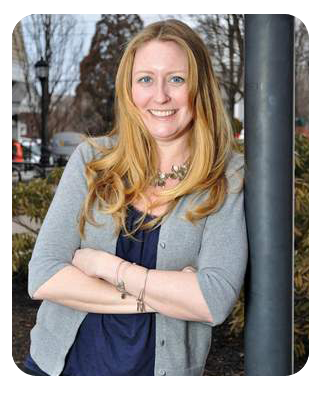
‘We never relied on the big-box stores to get our revenue. We work really closely with the mom-and-pop shops, and that’s been a successful model for us. The difference is the smaller retailers keep a steady marketing plan. (When) the big boxes make a big marketing change … we didn’t have the same massive depletion of income.’
–Robyn Collins, Publisher
Shore Publishing LLC,
Madison, Conn.
The New England Newspaper & Press Association, recognizing that events are a growing revenue source for newspapers, offers event management services to its members. For information, please contact Linda Conway, executive director, at (781) 320-8048 or l.conway@nenpa.com, or Megan Sherman, assistant director, at (781) 320-8042 or m.sherman@nenpa.com.
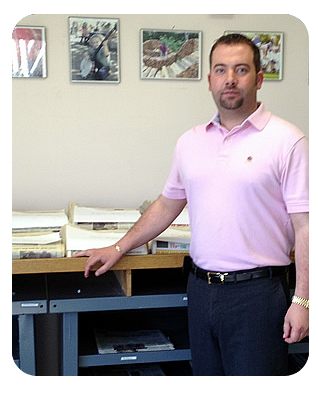
‘(The investors) believe in local journalism and that what large newspapers were doing was detrimental to their existence. We’re focusing back on what the reader wants and what the audience wants. We’re reinvesting in the community to be what newspapers once were.’
–Jordan Brechenser, Advertising director
New England Newspapers Inc.

‘Since we’re so local, we are providing a service that no one else is going to provide.’
–Greg Popa, Publisher
Stowe (Vt.) Reporter, Waterbury (Vt.) Record,
News and Citizen of Morrisville, Vt.
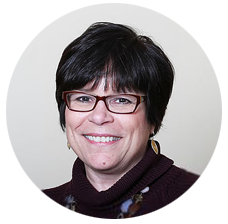
‘I can’t imagine that there isn’t a newspaper company that wouldn’t say print revenue has gone down tremendously. It’s shocking how much we’ve dwindled, so we are constantly reinventing ourselves.’
–Barbara Bock, Vice president of advertising,
Portland (Maine) Press Herald,
Maine Sunday Telegram of Portland
‘Events give the opportunity for clients to come and participate, knowing we’re going to draw the right audience for them.’
–Tim Marken, Chief growth officer
Boston Globe

‘There’s a lot of interest in these (special anniversary sections). It really helps us and a tremendous number of advertisers want to participate in it.’
–Scott Kimball, Advertising director,
Ellsworth (Maine) American
Mount Desert Islander of
Bar Harbor, Maine
